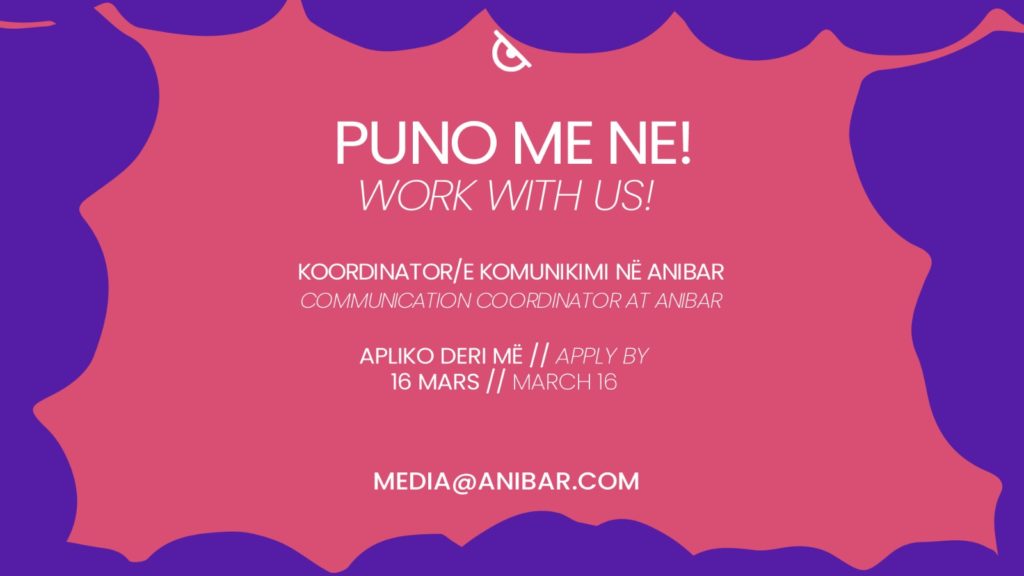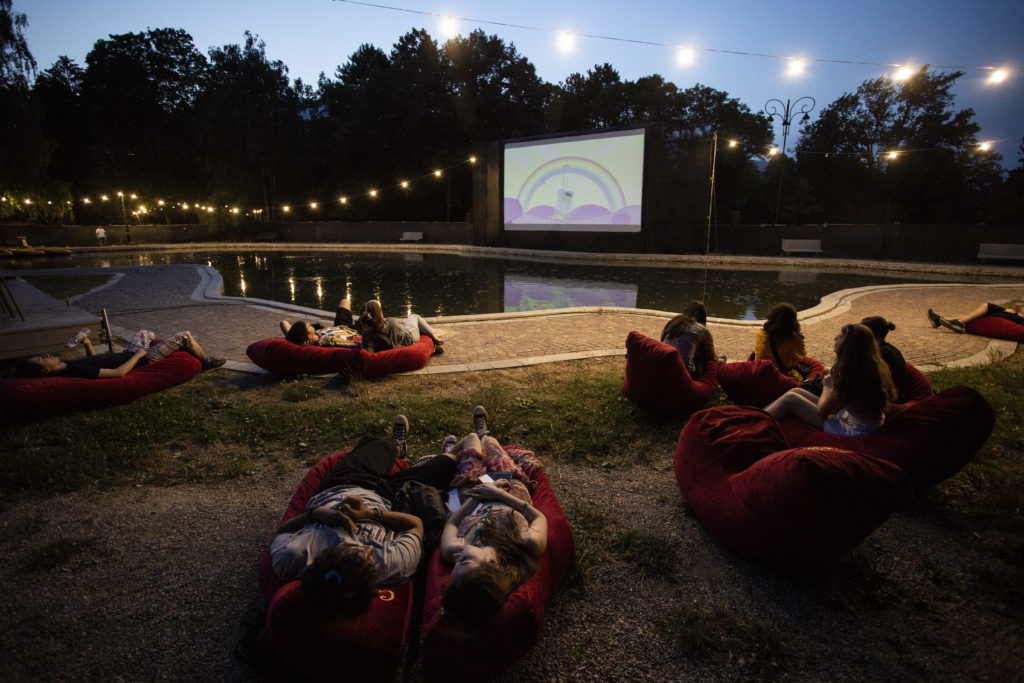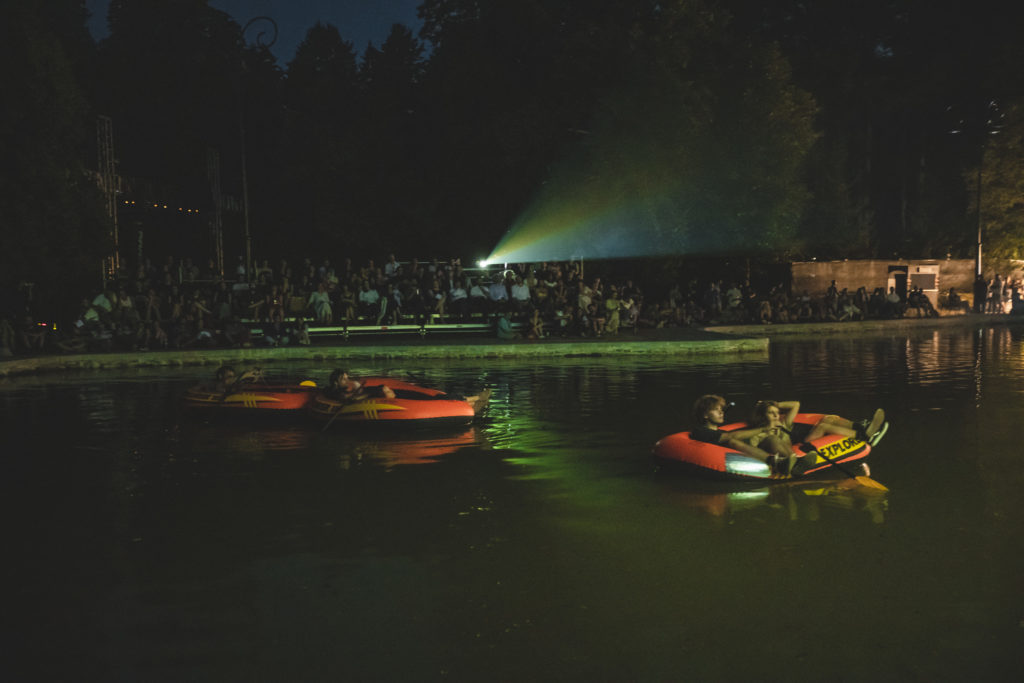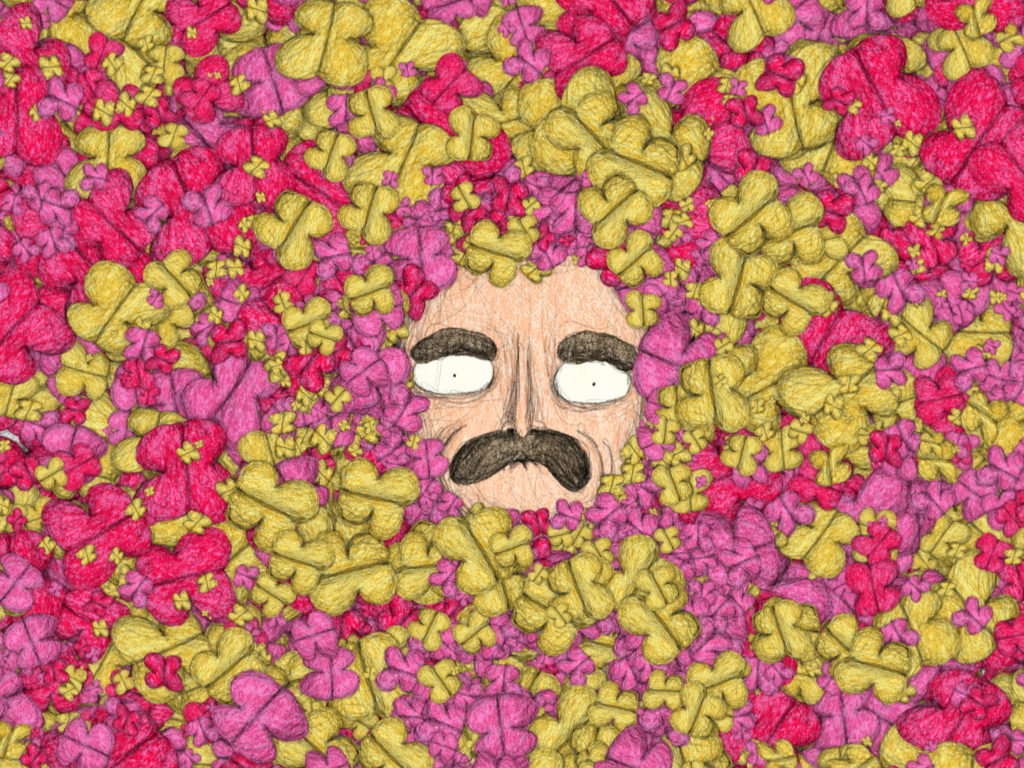A recap of 10 years of Hopes and Fears in Kosovo

Last year Anibar Animation Festival celebrated its 10th anniversary and against all odds this Kosovo festival has grown into a first-class animation event. Nancy Denney-Phelps, known as Anibar’s grandmother, shares with us her review of the Festival and we bring it to you.
This year Anibar Animation Festival celebrated its 10th anniversary and against all odds this Kosovo festival has grown into a first-class animation event. From its humble beginnings, showing films on an outdoor basketball court, festival director and founding member Vullnet Sanaja has seen his dream of contributing to his community become a reality.
I was lucky enough to be invited to the 2nd edition of Anibar and I have watched the festival blossom and bloom. Along with Luuk Van Huet of the Netherlands and Gjon Marku, originally from Kosovo but now living in Canada, I was a member of the jury that 2nd year. I have since been a guest at the festival many times, so I have had the pleasure of watching Anibar grow. This year I had the honor to be declared the Grandmother of Anibar, as my festival badge proudly proclaimed.

Along with year-round workshops for the community, the festival has taken over the lease and revitalized the Cinema Jusuf Gervalla. The only theatre in Peja, it closed down in the 1960s when the projector broke. A few years ago after being extensively remodelled, it is now the heart of the festival as well as showing films regularly throughout the year and acting as a community center. Before Anibar there were no opportunities for young artists to attend a professional animation school. Two years ago the festival established the Anibar Animation Academy in Pristina, the capital of Kosovo, one hour from Peja.
The theme for the jubilee edition of the festival was Hopes and Fears. In choosing this theme the festival, which is an organization of passionate activists, asked everyone to talk about their hopes and fears in order to better understand where we are and where we want to go as a society. In particular, the festival organizers are concerned about Peja’s social and natural environment.
In keeping with this year’s theme, The Tower, directed by Mats Grorud from Norway, was in the feature film competition. The powerful film is the story of Wardi, an 11-year-old Palestinian girl who lives with her entire family in a refugee camp in Beirut. The puppets of Wardi and her family are set against a background cleverly constructed out of cardboard.

At the daily director’s chat Laurent Versini, French producer of The Tower, said “. . .The Tower is absolutely the best example of hopes and fears because both children and adults are full of hopes and fears. You can imagine what fears people have in Lebanese camps every day. Fear of no electricity, no food, no doctor, fear of war, fear that they will never return to their homes . . . they hope to return home and hope to be happy”. The Tower won the Best Feature Film award.
One of my favorite films in the short film competition program was Untravel by Ana Nedeljkovic and Nikola Majdak, Junior. The film is set in a gray and isolated world surrounded by a huge wall. The residents tell themselves that this is the most beautiful country in the world. Still, one young woman dreams of “elsewhere”. She wonders what lies beyond the border, what else life has to offer. Untravel is a film about the fear of crossing boundaries and the possibilities of overcoming your fears.
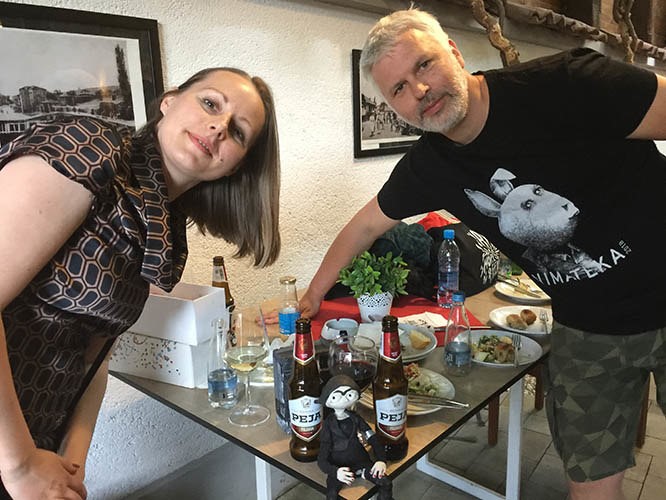
Ana is very witty and droll. In their talk How to Make Animated Dystopia?, part of the festival’s series A Balkan Tale, Ana showed the audience the view from her apartment window in Belgrade. It’s a view of bleak high-rises with sad concrete walls and black windows, just like in Untravel. Her message was “Our animations look like dystopia from hell, but they are based on our reality”.
Ana went on to thank her native Serbia for all of the inspiration it has given her. Ana and Nikola’s previous film Rabbitland (2013) is set in an urban landscape devastated by war. It is inhabited by rabbits with a hole in their head where a brain should be. They are brainless and have no problems. The only thing that they have to do every day is to vote — for the same party which wins the election over and over again forever. She explained that the film was inspired by life in Serbia. During the 1990s the dictator constantly organized new elections that he always won. It was a “perfect democracy”.
Both Untravel and Rabbitland have won numerous prestigious awards. Rabbitland was awarded the Crystal Bear at the Berlinale. Untravel received its world premiere at the 2018 Berlinale as well as being screened at Sundance and nominated for Best Animated Short Subject at the 2019 Annie Awards.
Chintis Lundgren and Drasko Ivezic created Manivald in 2017. The film centers on the title character, Manivald, an underachieving 30-something fox who still lives with his mother. Their relationship becomes strained when Manivald discovers his mother in bed with Toomas, the handsome wolf repairman who has come to fix their washing machine. Toomas had just left Manivald’s bed and the young fox was dreaming of a lovely future with the hot repairman.

Chintis’ characters are so engaging that you want to know more about them. Her new film, Toomas Beneath the Valley of the Wild Wolves, takes us deeper into the life of Toomas where we discover that he is married with a wife and children. He has just lost his well-paid job and has secretly started working as a gigolo to support his family. What Toomas does not know is that his wife has begun attending a female empowerment group that involves male slaves. That is the last place either of them expects to see the other partner.
Chintis’ creative mind leaves endless possibilities for more films about her character’s adventures. I am already looking forward to the next one. Perhaps we’ll find out what has happened to Manivald after he leaves home or what is his mother up to now? The Anibar audience loved Toomas Beneath the Valley of the Wild Wolves as much as I did. They voted it the winner of the Audience Award.
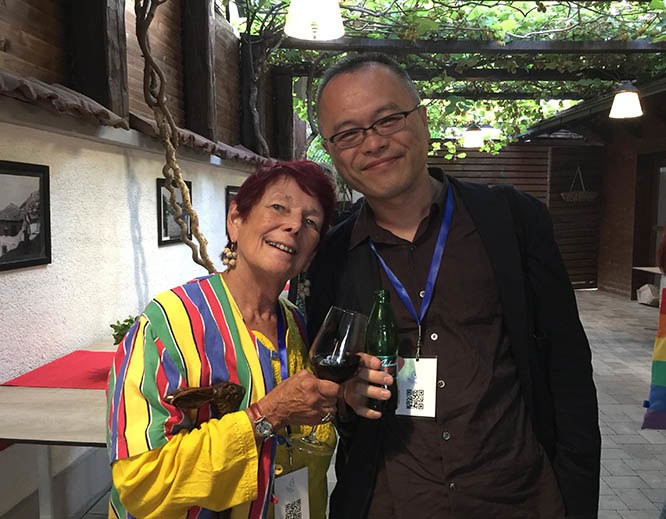
Koji Yamamura is not only a widely respected animator with 36 short films to his credit as well as 61 television episodes, but he has also illustrated 51 picture books, 20 of which have been translated into English. This year he came to Anibar as a member of the Grand Jury. He took time off from his jury duty to talk about his work process at his presentation, Transforming the Intangible into the Real.
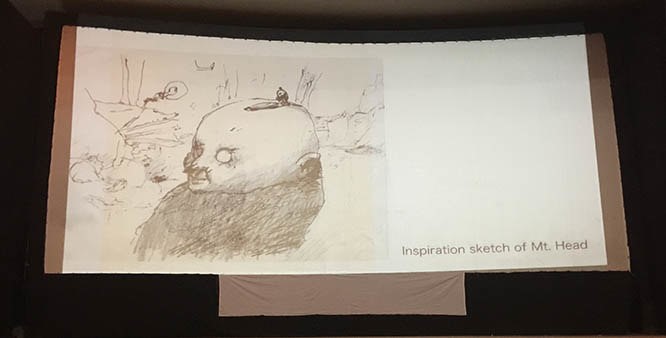
His presentation centered around the psychological aspects of six of his films: Aquatic (1987), Oscar-nominated Mt. Head (2002), Fig (2005), Franz Kafka’s A Country Doctor (2007), Muybridge’s Strings (2011), and Parade De Satie (2016). Koji explained, “Generally, the technology used in animation production tends to become the focus of attention, but for me making animation is to enter a super spirited world where I transcend the dualism of mind and matter, a place where I believe lies the answer to uniting the subconscious with reality”. Along with screening the six films, Koji also showed us examples of his illustrations for children’s books.
At a separate screening, Koji presented 12 of his children’s films. The program included his 3 part short series for children, Imagination, The Sandwiches, and A House. The three shorts feature the bird-like duo Karo and Piyobupt. The films were as big a treat for adults as they were for the young filmgoers.
The Jusuf Gervalla Cinema was packed full to hear Bryan Newton speak. Los Angeles based Newton has storyboarded and/or directed many of the Emmy winning Adult Swim episodes of Rick and Morty over all 3 seasons. He talked about helping to develop the pilot and what he is working on for season 4. Along with clips from the show, Bryan showed some behind the scenes animatics and designs for Rick and Morty.
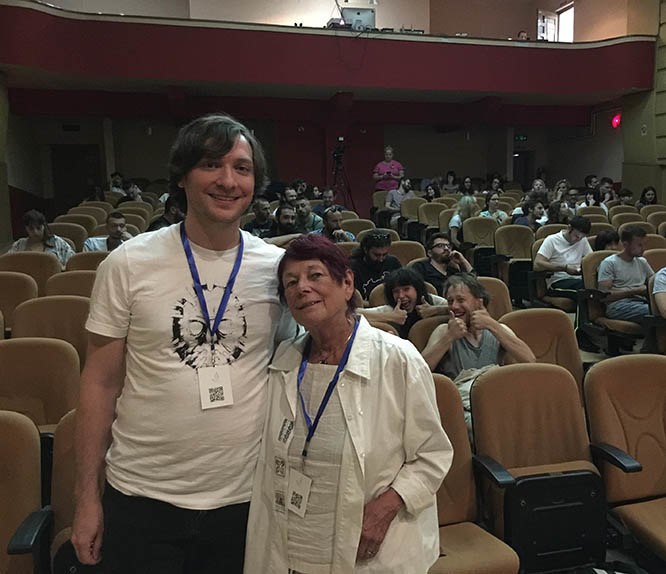
Matt Taylor, director of The Rick and Morty Exquisite Corpse showed several segments from the project. In 2017, The Exquisite Corpse project offered Matt the opportunity to challenge 22 animation artists to contribute their own 5 to 10 seconds of Rick and Morty. Taylor said “I was given complete freedom. I could choose the artists as well as the music. All the animators were free to work in their own style. The only thing I had to do was to keep the whole thing on track and produce the final thing in 2 months.
Following a Q & A session, Taylor was mobbed by young audience members wanting to know how they could work on Rick and Morty. Taylor’s advice to them was “There is obviously so much talent here . . . so start your own studios right here”.
Although Anibar has 4 International and 4 Student Competitions, a Feature Film Competition, Children’s programs, and Panorama and numerous special programs, the heart of the festival is focused on the citizens of Peja. The festival encourages young people to express their ideas and worldviews through animation and to discuss important social issues. It is deeply committed to breaking cultural apathy through cultural activism.
Nowhere is this better demonstrated than in the panel discussions and workshops. The City We Strive For: Civic Space and Our Right to the City is a current topic in Peja. More and more rich foreigners are coming to the city to build large holiday homes that are only used for 3 or 4 weeks a year and sit empty the rest of the year, so the question of how citizens can keep control of their city planning and guarantee that public open spaces are preserved is a very relevant question. No solutions can be found in a 1-hour panel but from the lively discussion and the audience’s questions and comments, it was obvious that this panel opened the door for further discussion.
The panel on Art and Human Rights explored the role of artists and their work in promoting human rights and civic activism. Art is a unique, natural medium to spread complex ideas to a broad audience.
I chaired a panel on Animation as a Tool of Explaining What Cannot Be Said with Words. Panel members were award-winning Dutch animator and director Anna Eijsbouts, Hana Arapi, and Jeremiah Dickey. Anna’s latest films include the 2017 Hate for Sale and Voting in the EU (2019). Hana is the co-owner of AMAM Studio, a design and animation studio in Prishtina. Jeremiah is a New York-based animator who has been an animation director for TED-Ed since 2012.

For me, the most fascinating discussion was Art in Political Activism in Kosovo during the 1990s. The history of what led up to the Kosovo War, which lasted from late February 1998 to June 1999, is very complex. During that period people self-organized using peaceful as well as armed options of defense. The panel tackled the question ‘’what have we learned about art as a mechanism for social movement?’’

Numerous workshops were held to give the young people of the city a chance to learn hands-on about various animation techniques. For the younger animators Animating Silhouettes and Paint brought together two art forms, using paper contrasted with painting on glass. The group made their own music and sound design, finally putting it all together in a computer with the help and guidance of their teachers Mikolas Fiser and Viktorie Stepanova from the Czech Republic.
For older students, Visual Storytelling Using Stop-Motion Animation gave them an opportunity to explore the basics of cut out animation, shot frame by frame. Animator and illustrator Szigeti Mate from Budapest led the workshop.
Upstate New York animator Mari Jayne Blanchard’s workshop, The Animated Line in VR: Hand-Drawn Animation in Oculus Quill, gave more advanced students the opportunity to create hand-drawn animation in a 3 dimensional VR space. After an introduction to the basics of Quill UI, participants designed and created their own individual short animated VR experiences.
For me, the most challenging Master Class for was Olga Bobrowska’s Film Criticism and Journalism where the group put out a daily newspaper. Having mentored a similar workshop at another festival I know how intense, yet rewarding, this project is. Olga is an authority on classic Chinese animation as well as the author of numerous academic articles, reviews and critiques so she was well up to the challenge.
At the festival, Olga and her students published a daily 8-page newspaper complete with color photos. Along with reviewing films, the young journalists interviewed festival participants and did an excellent job of keeping us all up to date with daily highlights of the festival. All articles were in English and Albanian, the official language of Kosovo. Even if all of the workshop participants don’t enter a career in journalism the workshop will have taught them how to look not just at film, but the world, with a critical eye.
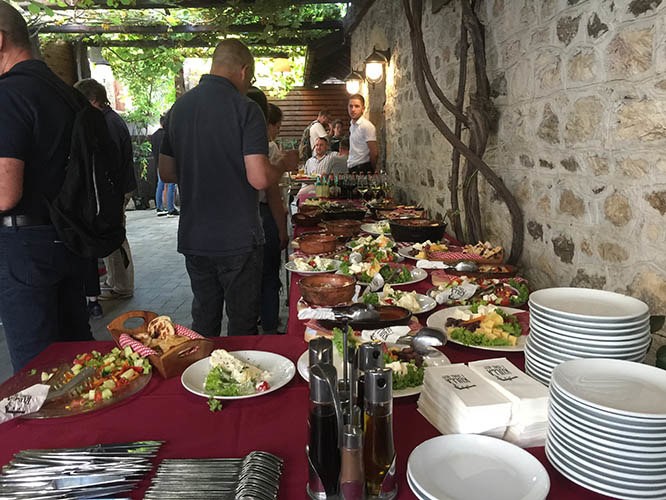
Even with the serious nature of the festival this year, it was also a lot of fun. From dinners for all of us at a lovely local restaurant to the dinner party at the theatre, there were plenty of opportunities for socializing. During the screenings at the lake, you could watch the films while paddling around in a rubber boat. After the screenings, there were bands and DJ’s for dancing. One evening there was a pot luck dinner at the lake where everyone was asked to bring something to eat or drink representing the country they were from.

My heartfelt thanks go out to Festival Director Vullnet Sanaja and Artistic Director Petrit Gora for inviting me to be part of the 10th-anniversary celebration and providing such lovely hospitality. A big thank you goes to all of the staff and volunteers who went out of their way to be helpful.

Anibar has recently announced some administrative changes. Vullnet has stepped into the challenging role of Executive Director, overseeing Anibar’s numerous year-round activities. Arba Hatashi will take on the role of festival director. Arba is familiar to anyone who has attended the festival because she has been working with Anibar for the past 6 years in several different capacities. Petrit Gona will continue his role as artistic director.
The 11th edition of Anibar will be held on 13 – 19 July 2020. If you ever have the opportunity to visit the festival be sure and do it. You will meet wonderful people and have a great experience you will never forget in a fascinating city.
This article was first published at Animation World Network (www.awn.com).
WINNING FILMS:
Grand Jury: Agota Vegso, Hungary/Denmark; Annette Schindler, Switzerland; Jeremiah Dickey, United States; Koji Yamamura, Japan; and Lise Fearnley, Norway
Grand Prix:
And Then The Bear, Agnes Patron, France
Special Mention:
I’m Going Out For Cigarettes, Osman Cerfon, France
Special Mention:
Egg, Martina Scarpelli, Italy
Balkan Competition:
Imbued Life, Ivana Bosnjak and Thomas Johnson, Croatia
Special Mention:
N’korniz, Gezim Ramizi, Kosovo
Feature Film:
The Tower, Mats Grorud, Norway
Student Jury: Hana Arapi, Kosovo; Jon Mithi, Kosovo; Lum Radoniqi, Kosovo; Qendrim Spahija, Kosovo; Rigon Kurteshi, Kosovo; Mentors: Kamila Dohnalova and Pavel Horacek of the Czech Republic
Student Competition:
Applesauce, Alexander Gratzer, Austria
Special Mention:
Hide N Seek, Barbara Halirova, Czech Republic
Animated Music Video:
Siames – Mr. Fear, Pablo Rafael Roldan and Ezequiel, Argentina

